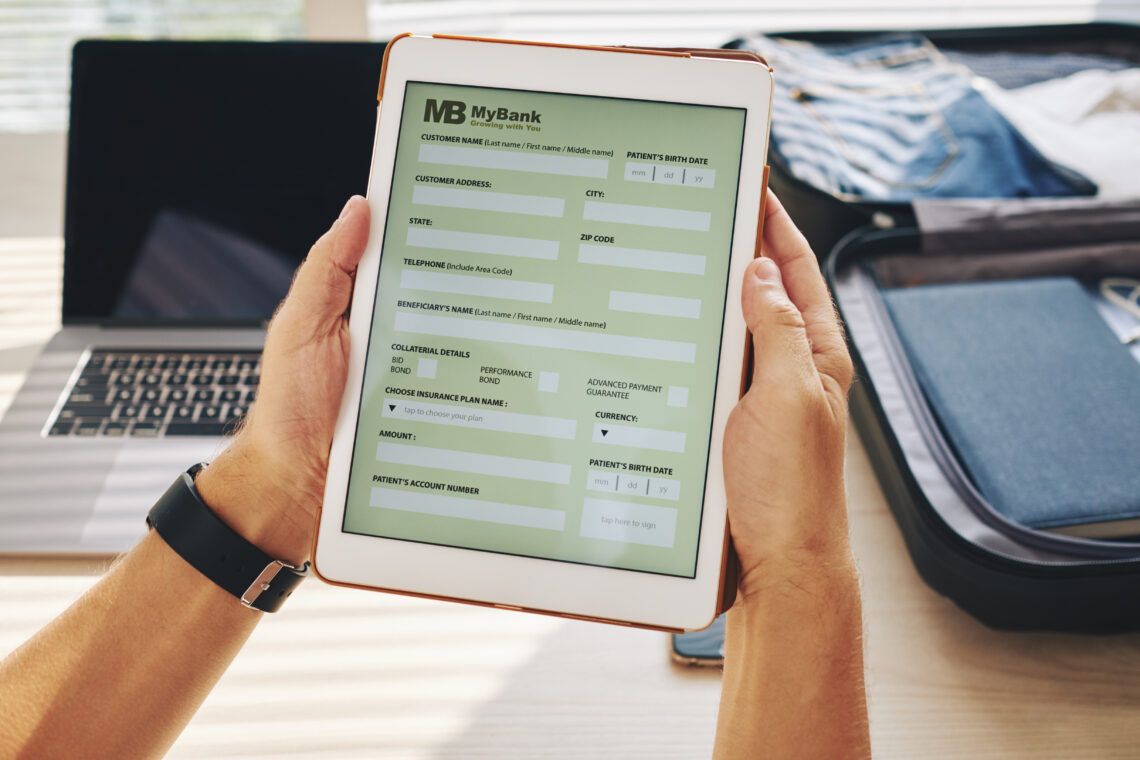
10 Essential Tips for Safe and Secure Online Banking
In the digital age, online banking has become an essential part of our daily lives. It is convenient, fast, and easy to use. However, this convenience also comes with a risk – the risk of cybercrime. With the rise of online banking, cybercriminals have become more sophisticated in their methods of hacking into accounts and stealing personal information. To protect yourself from these threats, it is important to be aware of the essential tips for safe and secure online banking. In this post, we will discuss the top 10 tips to keep your online banking experience secure and protect your finances from cybercrime. Whether you are a seasoned online banking user or just starting out, read on to learn about the best practices for safe and secure online banking.
Choose a Strong and Unique Password
Choosing a strong and unique password is the first and most important step to ensure the safety and security of your online banking. A strong password contains a combination of upper and lower case letters, numbers, and symbols. It is also important to avoid using easily guessable passwords such as your name, birthdate, or sequential numbers. Creating a unique password for your online banking account is also essential. Do not reuse the same password for multiple accounts as this can make it easier for a hacker to gain access to all your accounts if they manage to crack your password. It is recommended to change your password regularly, ideally every 3-6 months. If you suspect that your password has been compromised or you have shared it with someone, change it immediately.
In addition, it is important to keep your password confidential and not share it with anyone, including family members, friends, or bank employees. If someone else needs access to your account, it is better to set up a separate login for them rather than sharing your own login details. Remember, your password is the first line of defense against online banking fraud and should be taken seriously.
Enable Two-factor Authentication
When it comes to online banking, security is of utmost importance. One of the best ways to ensure that your accounts are safe is to enable two-factor authentication. Two-factor authentication, also known as 2FA, is an additional layer of security that requires a user to not only enter a username and password but also a second form of verification. This can be something like a fingerprint scan, a one-time code sent via text message, or an authentication app on your smartphone.
By enabling two-factor authentication, you’re adding an extra level of defense against hackers and unauthorized access to your accounts. Even if someone manages to obtain your username and password, they won’t be able to access your account without this second form of verification.
It’s important to note that not all banks offer two-factor authentication, so you may need to check with your bank or financial institution to see if this option is available. If it is, it’s highly recommended that you enable it as soon as possible to keep your online banking as safe and secure as possible.
Keep Your Software Up to Date
Keeping your software up to date is one of the easiest ways to ensure the safety and security of your online banking. Software updates are designed to fix bugs, patch security holes and improve performance, therefore, neglecting to update your software could leave you open to vulnerabilities that hackers can exploit. Make sure you keep your operating system, web browser, and all banking-related software up to date. This includes your mobile banking app, which often receives updates to fix security issues and improve user experience. It’s also a good idea to turn on automatic updates so you don’t have to remember to update your software manually. This will ensure that your software is always running the latest version with the most up-to-date security features. Another important thing to note is that you should only download software and apps from trustworthy sources. Be wary of downloading software or apps from unknown websites or sources, as these may contain malware or other malicious software that can compromise the security of your device and online banking information.
Avoid Using Public Wi-Fi for Banking
One of the most important tips for safe and secure online banking is to avoid using public Wi-Fi for banking. Public Wi-Fi networks are often unsecured, which means that the information you send and receive over these networks could be intercepted by cybercriminals.
When it comes to online banking, you should always use a secure internet connection. This means using a trusted network that you know is secure, such as your home or office network. If you need to use a public Wi-Fi network for any reason, make sure you use a virtual private network (VPN) to encrypt your internet connection and protect your data.
Another option is to use your mobile network’s data connection to access your online banking accounts. This is generally a more secure option than using public Wi-Fi, as mobile networks typically have stronger security measures in place to protect their customers’ data.
Remember, cybercriminals are always on the lookout for opportunities to steal sensitive information, including banking credentials. By avoiding public Wi-Fi for banking and using a secure internet connection, you can help protect yourself from cyber threats and keep your online banking transactions safe and secure.
Look for the Lock Icon and “https” in the URL
When you’re banking online, one of the most important things you need to do to ensure your security is to check that the website you’re using is secure. You can do this by looking for the lock icon in the URL bar of your browser, and making sure that the website’s URL starts with “https”. The lock icon indicates that the website has a secure connection and that any information you enter on that website will be encrypted, making it much harder for hackers to steal your data. The “https” in the URL also indicates a secure connection, as opposed to just “http”. It’s important to note that even if a website has a valid SSL certificate and a secure connection, it doesn’t necessarily mean that the website itself is safe. Always make sure to use a reputable banking website and be wary of any suspicious emails or links that ask you to enter your banking information. By following this tip, you’ll greatly reduce your risk of falling victim to online banking scams and ensure that your personal and financial information is kept safe and secure.
Be Cautious of Suspicious Emails and Links
When it comes to online banking, you should always be cautious of suspicious emails and links. Hackers and cybercriminals will try to trick you into giving away your sensitive information by creating fake emails and websites that look like they are from your bank. These emails and links may ask you to provide your login credentials or personal information such as your account number, social security number, or date of birth. Once they have this information, they can access your account and steal your money.
To avoid falling for these scams, always double-check the sender’s email address and look for any spelling or grammatical errors in the email body. Legitimate emails from your bank will never ask for your sensitive information.
If you receive an email or link that you are unsure about, do not click on it. Instead, contact your bank directly to verify if the email or link is legitimate. It’s better to be safe than sorry when it comes to protecting your personal and financial information.
Use a Reputable Antivirus Program
One of the most important things you can do to keep your online banking secure is to use a reputable antivirus program. This program will help protect your computer or mobile device from viruses, malware, and other malicious software that can compromise your personal information and put your online banking at risk. Make sure your antivirus software is always up-to-date and set to automatically scan your device on a regular basis. It’s also important to use a reputable vendor, as there are many fake antivirus programs out there that can actually do more harm than good.
Additionally, consider using a firewall to add another layer of protection. A firewall monitors and controls incoming and outgoing network traffic and can help prevent unauthorized access to your device.
Remember, your online banking security is only as strong as your weakest link. Don’t skimp on antivirus protection and take the time to ensure you’re using the most reputable programs available. By doing so, you’ll be taking an important step towards keeping your online banking secure.
Monitor Your Account Regularly
One of the most important things you can do to keep your online banking safe and secure is to monitor your account regularly. Checking your account on a regular basis can help you detect any suspicious activities, unusual transactions, or unauthorized access to your account. Make it a habit to check your account at least once a week or more frequently if you use your account for a lot of transactions. This will help you identify and report any fraudulent activities at an early stage, reducing the chances of losing your money or suffering serious financial damage. You can also set up account alerts that notify you of any changes in your account balance, large transactions, or login attempts from unrecognized devices. This is a great way to stay informed about your account activity and take immediate action if anything seems amiss.
Finally, if you do notice any suspicious activity, contact your bank immediately and report it to their fraud department. They will guide you through the necessary steps to protect your account and recover your funds if necessary.
Use a Dedicated Device for Online Banking
One of the easiest and most effective ways to ensure safe and secure online banking is to use a dedicated device. This simply means having a device (such as a laptop or tablet) that is only used for online banking and not for any other internet activities such as browsing or social media. By using a dedicated device, you can significantly reduce the risk of your banking information being compromised by malicious software or cyber-attacks. This is because a dedicated device is less likely to contain viruses or malware that could potentially steal your banking information. It’s also recommended that this dedicated device is not used on public Wi-Fi networks or shared with others. By keeping your banking device separate from other devices and networks, you can minimize the risk of unauthorized access to your sensitive information.
If you don’t have an extra device that you can dedicate to online banking, consider using a virtual machine or sandbox environment on your existing device. These tools create a separate, isolated environment that can be used exclusively for online banking and provide an extra layer of security for your transactions. Overall, using a dedicated device for online banking is a simple and effective way to keep your financial information safe and secure.
Know What to Do in Case of Fraud or Theft
As much as we would like to avoid it, fraud and theft can still happen even with the best security measures in place. If you suspect any fraudulent activity on your account, it’s important to act fast.
The first step is to contact your bank immediately and report the fraud. They will then guide you on the next steps to take, such as blocking the account or changing login details. It’s also important to report the fraud to the relevant authorities, such as the police or the Federal Trade Commission (FTC). This can help in tracking down the culprit and preventing further damage.
To avoid being a victim of fraud or theft, it’s important to always monitor your account activity regularly. Check for any unusual transactions or purchases and report any suspicious activity immediately.
Finally, always be cautious when it comes to sharing personal information online. Be wary of phishing scams, which are designed to trick you into revealing your login details or other personal information.
By following these steps and staying vigilant, you can help protect yourself from fraud and theft and keep your online banking experience safe and secure.
We hope you found our blog post on safe and secure online banking helpful. As more and more people turn to online banking, it’s essential to stay vigilant and protect your money and personal information from cybercriminals. By following the ten tips we outlined in this post, you can ensure that your online banking activity is secure and safe. Remember to always stay informed and up to date on the latest cyber threats and best practices for online security. Stay safe, and happy online banking.


